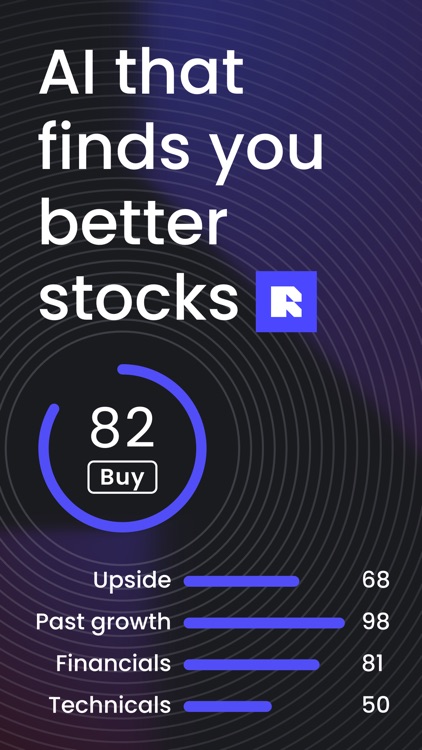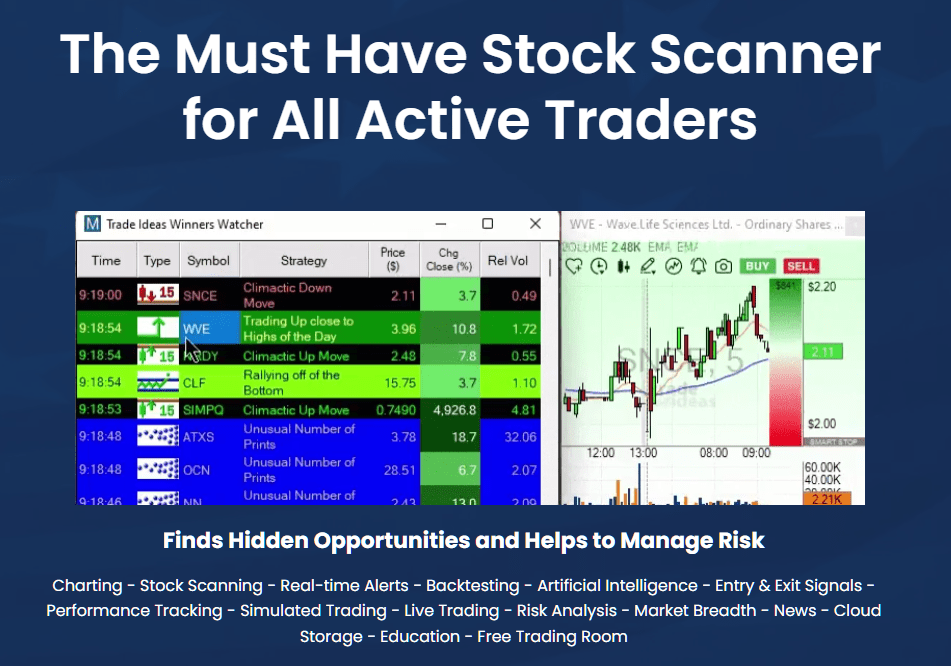20 Great Ideas For Deciding On AI Stock Trading Websites
20 Great Ideas For Deciding On AI Stock Trading Websites
Blog Article
Top 10 Tips For Evaluating The Accuracy And Performance Of Ai Trading Platforms For Predicting Stocks
To ensure that the tool you choose can provide reliable insights and forecasts, it is essential to assess the accuracy and efficiency of the tool. Here are ten top suggestions for evaluating these platforms.
1. Backtesting Results
What to Look for: See whether the platform allows backtesting to test how its predictions have performed based with the past data.
What is the significance of backtesting? It can help validate the AI accuracy of the models through comparing the predictions against real-world outcomes.
Find platforms that allow users to modify backtesting parameters such as duration and asset classes.
2. Real-time performance tracking
What to look out for: How the platform performs in real-time situations.
What's the point? Real-time performance is a better measure of the effectiveness of a platform than backtesting using historical data alone.
Tip: Use a demo account or free trial to track real-time predictions and compare them to actual market movements.
3. Prediction Error Metrics
What to Look Out For to determine the accuracy of predictions by evaluating metrics like the Mean Absolute Error(MAE) or the Root-Mean Squared Error(RMSE) as well as Rsquared.
Why It Matters : These metrics provide a quantifiable way to determine how close predictions are to the actual outcomes.
Tip: Platforms that publicly share their metrics are more transparent and trustworthy.
4. The Win Rate and the Success Ratio
What to look for The platform's success rate and winning rate (percentage correct predictions).
Why is it Important The high win rate and success ratios show greater accuracy in prediction and a higher chance of revenue.
Be wary of platforms which claim to have a high success rate (e.g. 90%) %+),) because there is no way to assure 100 percent success.
5. Benchmarking Market Indices for Benchmarking
What to look out for What to look for: Compare the platform's forecasts and performance to the major market indices, like S&P 500 or NASDAQ.
Why it's Important It will allow you to find out if your platform has outperformed, or underperforms, the market overall.
Be sure to look for consistency in your performance, not just gains in a short period of time.
6. Consistency on Market Conditions
What to Look for What to look for: See how the platform performs at different market conditions.
What is the significance of it A solid platform can perform effectively in all markets, not just those that are in good conditions.
Check out the predictions of the platform during volatile markets or market downturns.
7. Transparency in Methodology
What to Look for How to recognize AI algorithms and models (e.g. neural nets or reinforcement learning).
Why It Matters Transparency is crucial as it allows you to determine the scientific accuracy and reliability of the platform.
Avoid platforms that use models that are "black boxes" without explaining the process by which predictions are made.
8. User Reviews and Independent Tests
What to Look For When Choosing a Platform Review the opinions of users and search for tests that are independent or independent reviews.
Why it matters The independent reviews and tests provide unbiased information about the platform's accuracy and performance.
Tip: Look for comments on forums such as Reddit, copyright or financial blogs.
9. Risk-Adjusted Returns
What to look out for The platform's performance can be measured with risk-adjusted metric such as Sharpe Ratio, or Sortino Ratio.
What is important The metrics are based on the level at which risk is taken to generate returns. This provides an overall image of performance.
Sharpe ratios (e.g. over 1) suggest a higher risk-adjusted rate.
10. Long-term Track Record
What to look out for: Examine the effectiveness of the platform over a long time (e.g. for 3-5 year).
Why it matters The long-term track record is more certainty than shorter-term outcomes.
Beware of platforms that showcase only the smallest of successes or cherry-picked results.
Bonus Tip: Use a Demo Account to Test.
Demo accounts and free trials permit you to check the accuracy of the prediction system in real-time without risking actual money. This gives you the opportunity to test the accuracy and efficiency.
Following these tips can help you evaluate the reliability and performance AI stock predicting platforms. This will allow you to pick one that best suits your trading needs and the risk you are willing to take. It is crucial to keep in mind that there is no perfect platform. The most effective approach is to blend AI insight with your own analysis. Take a look at the best ai stock picker info for site advice including ai trader, ai trading bots, chart ai for trading, ai trade, best copyright prediction site, ai trading platform, investment ai, ai chart analysis, ai trading tools, copyright ai bot and more.
Top 10 Tips To Assess The Latency And Speed Of Ai Stock Trading Platforms
When you are evaluating AI trading platforms that can predict or analyze price movements, speed and latency are crucial factors, especially for high-frequency traders and algorithmic traders. Milliseconds delay could be detrimental to trade execution. Here are the top 10 tips for evaluating the speed and latency of these platforms:
1. Data feeds that are real-time: How can you analyze them
Speed of data delivery Be sure that the platform delivers live data (e.g. sub-millisecond delay).
Nearness of the data source: To reduce the amount of time required to transfer data, make sure whether your platform's servers can be located near major exchanges.
Data compression: Check if the platform uses efficient data compression techniques to speed up data delivery.
2. Test Trade Execution Time
Order processing time: Measure how fast the platform handles and executes trades when you have submitted an order.
Direct market access: Check that the platform allows direct orders to be sent to the exchange.
Execution Reports: Make sure that your platform offers complete reports on the completion of orders, as well as timestamps.
3. Review the responsiveness of the Platform
User interface (UI) speed: See the speed at which the UI of your platform responds to inputs (e.g., clicking buttons, loading charts).
Updates to charts Check to see if the charts and visualizations are updated in real-time with no lag.
Mobile app performance If you are you're using a mobile app make sure it runs similarly to the desktop version.
4. Find low-latency infrastructure
Server Locations: Select servers that have low latency and are near major financial centers, or exchanges.
Find co-location options. These services permit you to place your algorithms close to the exchange.
High-speed Networks: Check the use of a fiber-optic high-speed network, or other technology with low latency.
5. Backtesting and Evaluation of Simulation Speed
Check how quickly the platform analyses and processes old data.
Platform latency is required to permit real-time simulations of trades.
Parallel processing: Determine whether your platform supports the concept of distributed computing or parallel processing to speed up complicated calculations.
6. Estimate API Latency
API response: The API's API is evaluated by the amount of time it takes to answer requests.
Rate limits: Determine that the API has adequate rate limits to prevent delay during high-frequency trading.
WebSocket support: Check if the platform uses WebSocket protocols for real-time, low-latency data streaming.
7. Test Platform Stability When Loaded
High-volume trading: Play high-volume trading scenarios to see whether the platform is steady and responsive.
Test your platform in periods of extreme market volatility.
See if there are tools that can be used to test strategies in extreme circumstances.
8. Assess the connectivity and network of your choice
Speed requirements for Internet: Make sure your connection is up to the recommended speed of your platform.
Check for redundant connections.
VPN latency: If you are using a VPN platform, make sure to determine whether the latency is high and also if there are alternative options.
9. Make sure you are using Speed Optimization features.
Pre-trade analytics: Ensure the platform has pre-trade analysis to improve the speed of execution and order routing.
Smart order routing: Check whether your platform uses SOR to locate the most efficient and speediest execution location.
Monitoring of latency: Ensure that your platform permits you to track and analyze your latency in real-time.
User Feedback and Review Benchmarks
User reviews: Read reviews from users to assess the platform's speed and performance.
Benchmarks from third parties: Search for independent reviews or benchmarks comparing the performance of the platform versus those of its competitors.
Case studies: Check whether the platform offers testimonials or case studies highlighting the platform's low-latency capabilities.
Bonus Tips
Trial period: You can make use of a demo or trial period to test the platform's performance and latency.
Support for customers: Make sure the platform provides assistance for issues related to latency or for optimization.
Hardware requirements: Check if you need specific hardware to get the best performance (e.g. high-performance computers).
Following these tips can help you assess the speed of AI trading platforms that predict/analyze the prices of stocks. You will be able pick a trading platform that is the most suitable for the requirements of your trading and eliminates any delays. A low latency is essential for algorithmic or high-frequency traders where even small delays could have a major impact on their profits. Have a look at the top ai trading bot tips for site advice including chart analysis ai, free ai investing app, best ai for trading, copyright ai bot, ai investing, ai stock market, ai stock price prediction, using ai to trade stocks, ai investment platform, ai stock trader and more.